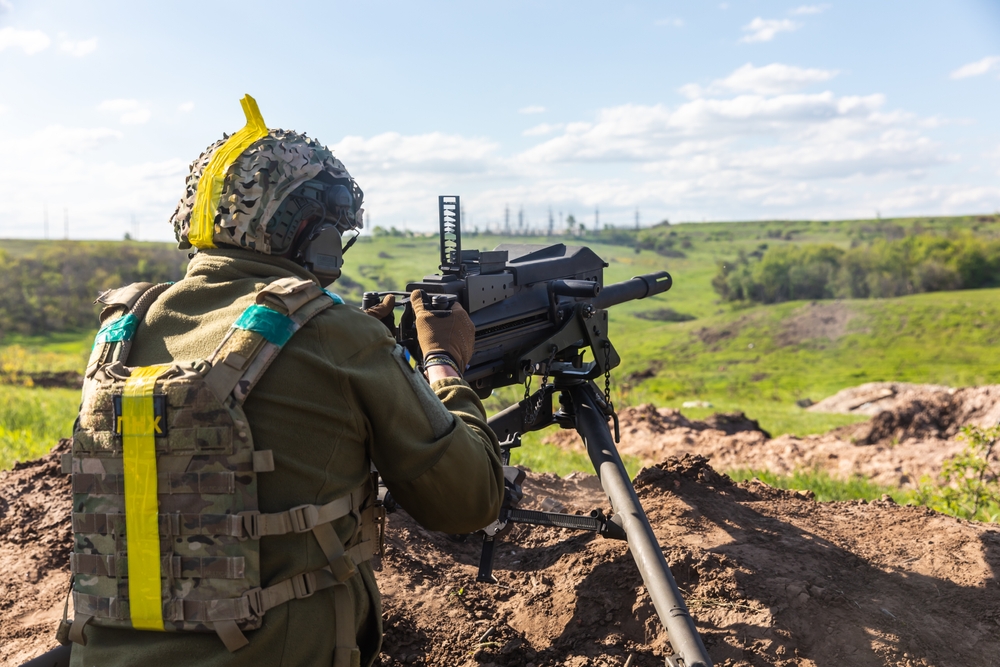Kursk’s fall: How Ukraine outmaneuvered Russia in a lightning offensive
For nearly two months, Ukraine has held control of approximately 1,000 square kilometers of the Kursk region, a strategically significant area near the Russia-Ukraine border. This Ukrainian success can be attributed largely to the use of advanced equipment such as UAVs (unmanned aerial vehicles), Marder infantry fighting vehicles, and Stryker armored vehicles. However, a critical factor that contributed to the Ukrainian victory was the significant help, or rather, the failures from the Kremlin.

A prominent German news outlet, Merkur.de, explored the reasons behind Putin’s inability to prevent Ukraine’s successful offensive in the Kursk region, offering several key insights. Perhaps the most striking among them is that Russian forces in the region were equipped with a substantial amount of artillery and heavy weaponry, including 98 artillery systems and 71 grenade launchers. Under normal circumstances and with proper coordination, such a force would have been capable of repelling any breakthrough attempt. However, two crucial factors tipped the balance: Russia's notorious bureaucratic inefficiency and the brilliant execution of the Ukrainian offensive.
This victory for Ukraine has also delivered a critical psychological blow to both sides—positive for Ukrainians and negative for Russians. Moscow's apparent inability to dislodge Ukrainian forces from the Kursk region, and the subsequent loss of territory within its own borders, has been a morale booster for Kyiv while causing significant demoralization for the Russian side.
Russia’s Complacency
Merkur.de reports that the Kremlin was warned multiple times in advance about a potential attack on the Kursk region. These warnings came from a variety of sources, including commanders within Kursk itself. However, it appears that Putin chose not to heed these warnings. It’s possible that Moscow underestimated Ukraine’s ability and willingness to launch such a bold offensive.
One of the key contributing factors to Russia's failure was the deployment of inexperienced and ill-prepared military units in the Kursk region, including conscripted soldiers. This was evidenced by the significant number of prisoners taken by Ukrainian forces and the large amount of captured equipment, including fully armed and undamaged T-90M, T-80BVM, and T-72B3 tanks. These captures indicate that the Kursk region was not devoid of high-quality military assets. The real problem lay within the Kremlin's poor decision-making and the inadequacy of the defending troops.
The Lightning Offensive
The Ukrainian offensive, launched on August 6, 2024, resulted in a rapid breakthrough, with Ukrainian forces advancing up to 35 kilometers deep into Russian territory. Border units had not been informed about the impending Ukrainian assault, even though intercepted documents suggest that the Kremlin was aware of the potential attack as early as the end of 2023.
Putin’s reaction followed his usual authoritarian playbook: shifting blame onto the security apparatus while absolving himself of responsibility. As a former KGB agent, he should have been able to grasp the severity of the intelligence reports. But the failure in Kursk wasn’t just due to Russia’s negligence; the Ukrainians executed their attack with precision and tactical brilliance.
One of Ukraine's initial moves was to neutralize Russia's aerial reconnaissance capabilities. Ukrainian drones eliminated Russian UAVs, effectively blinding their enemy. With Russian positions meticulously mapped, Ukraine launched further UAV strikes, weakening Russian defensive positions.
Tactical Brilliance of the Ukrainians
Ukraine demonstrated an exceptional understanding of modern warfare, placing a high emphasis on speed and mobility. The spearhead of their attack was comprised of Stryker armored vehicles, which are lightweight, fast, and more maneuverable than the heavier Marder infantry fighting vehicles that followed in the second wave. This allowed Ukrainian forces to maintain a high level of momentum in their advance.
Interestingly, Ukraine did not initially rely on tanks for the first wave of the attack, further showcasing the precision of their strategy. Polish MBT PT-91 Twardy tanks, Challengers 2, and T-72s likely provided backup support along with self-propelled howitzers like the AHS Krab. Ukrainian air support was also crucial in keeping the offensive force moving forward.
On the third day of the attack, Ukraine began bringing in logistical and support vehicles, including VAB, Wisent 1, and MAN HX81 tactical trucks. These reinforcements helped in securing the newly captured territory, demining areas, and preparing for long-term defense. Ukrainian elite units were deployed to further solidify the gains.
Russia’s Struggle to Mount a Counteroffensive
Despite the significant loss of territory, Russia has so far been unable to launch an effective counteroffensive. This speaks volumes about the depleted capabilities of the Russian Armed Forces. However, another reason for Russia’s inability to retake Kursk could be that their military focus remains heavily concentrated on the Pokrovsk direction.
According to Frankfurter Rundschau, the town of Vuledar, which Russia had defended for two years, has fallen, and the path to the strategically important city of Pokrovsk is now open. Ukraine’s focus on Kursk may have been a calculated risk, one that is now draining its resources and preventing an adequate defense of its own territory. By tying down its best units in Kursk, Ukraine may have inadvertently weakened its defenses elsewhere.
Conclusion
The conflict continues to escalate, with Russia still seeking to regain its lost territories while Ukraine presses forward in its efforts to recapture land. The Ukrainian success in Kursk underscores several critical lessons about modern warfare, including the importance of intelligence, coordination, and speed. At the same time, it has highlighted glaring weaknesses within the Russian military apparatus, from its complacency in strategic planning to its failure to mount a meaningful counteroffensive.
While Ukraine's bold strike has dealt a psychological blow to the Kremlin, the conflict is far from over, and both sides are likely to face further challenges in the ongoing war.








